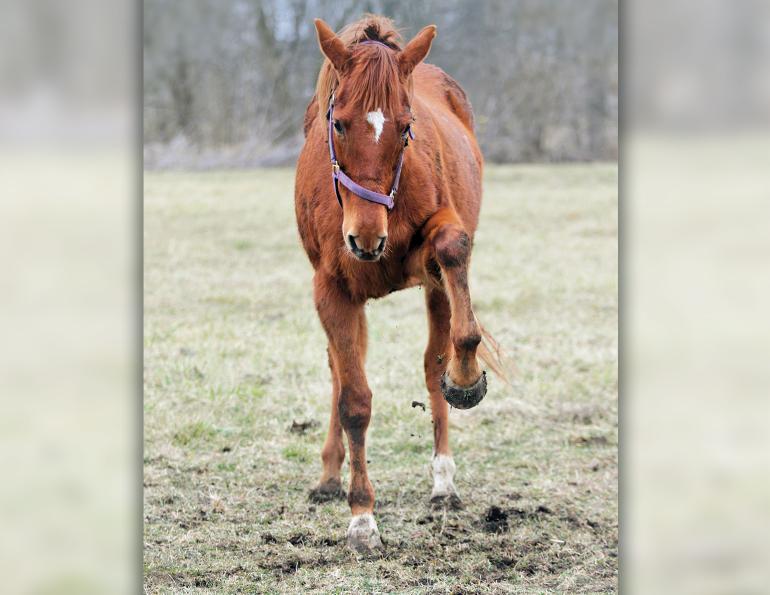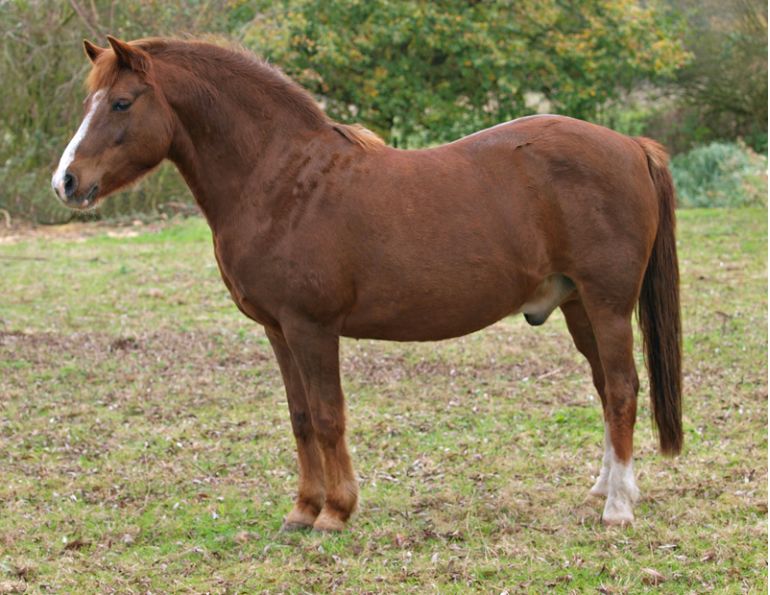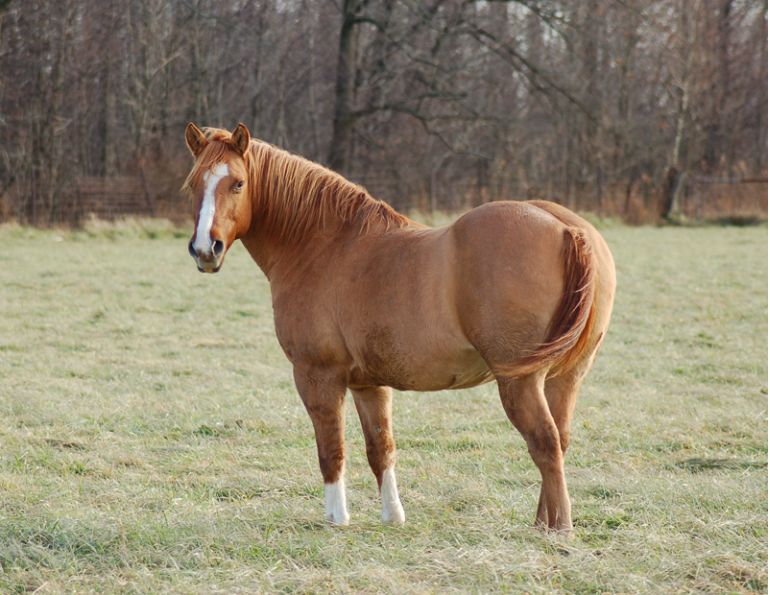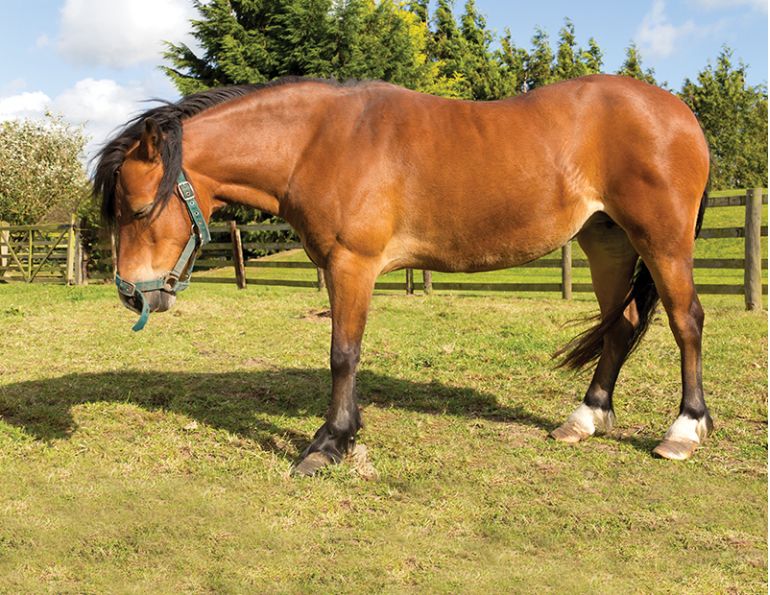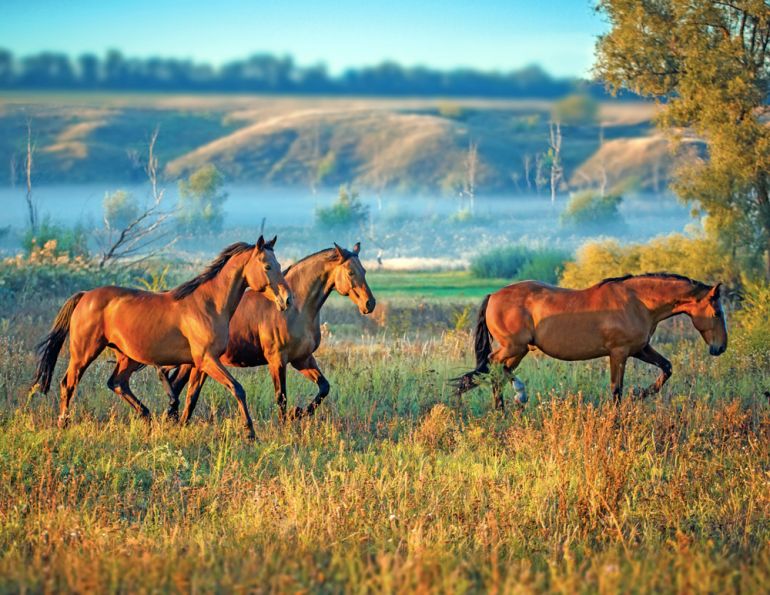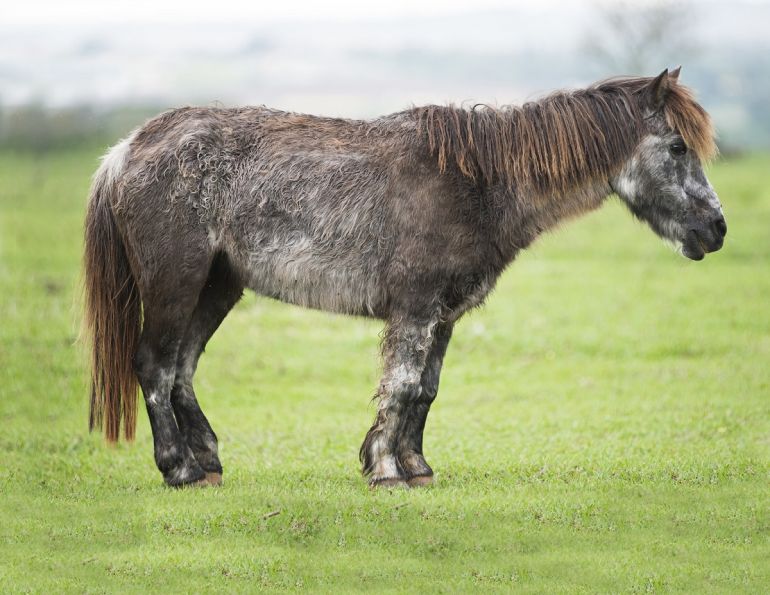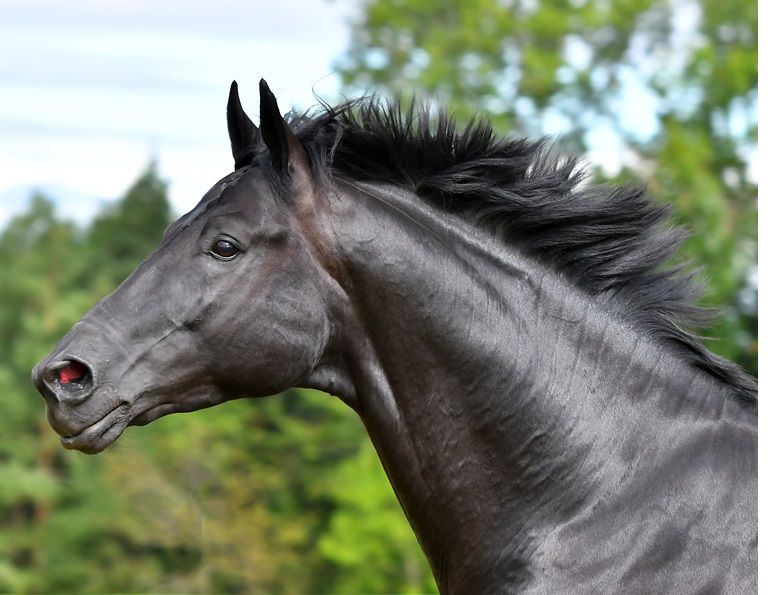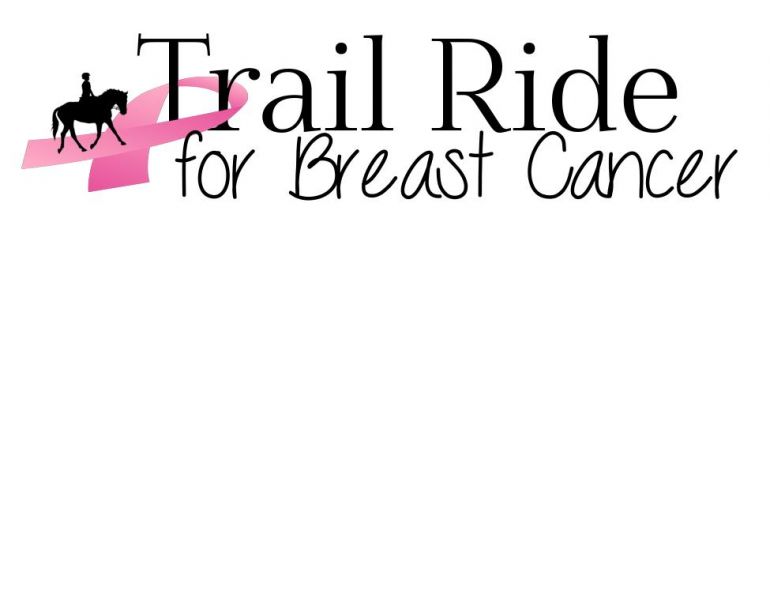Colic is the #1 killer of horses
In this article:
- Gut Health & Colic
- Signs the Horse May be Suffering from Colic
- Colic at Specific Sites in the Equine Digestive Tract
- The Colic Risk Rater
Gut Health & Colic
If there’s one word that strikes fear into the hearts and minds of horse owners, it’s “colic.” Used to describe any form of abdominal pain, colic can affect horses for many reasons and in any season, although cold weather months are a particularly challenging time with increased risk of impaction-related colic.
Three simple rules to prevent colic, especially during cold weather, are:
- Increase forage in the diet,
- Keep your horse hydrated, and
- Maximize turnout and exercise.
Rule #1 – Increase Forage in Diet
Forage is critical for hindgut fermenters. An 1,100 pound horse should consume 2.0 to 2.5 percent of its body weight per day in forage (22 to 28 lbs). Because horses only produce saliva when they chew, feeding forage free choice will increase the production of saliva, which is one of the best buffers for the horses’ digestive system and the most effective way to reduce the chance of ulcers and impaction colic.
Rule #2 – Keep your Horse Hydrated
While on the topic of impaction, 24/7 access to clean water is imperative to keep all that forage moving. Remember, horses tend to drink less in the winter and impactions usually form with dry feed. During Canada’s coldest months, water in buckets can freeze within a few hours of filling, so ensure your horse doesn’t become dehydrated due to a frozen water source.
Rule #3 – Maximize Turnout and Exercise
Keep moving! Horses are not humans; they are trickle feeders designed to graze up to 18 hours a day while travelling 16 kilometres or more a day to satisfy their need to feed. The horse kept in a stall for most of the day is more prone to colic than one that is turned out. Many stable designers are developing track systems that encourage horses to move around in order to access resources. Improved motility of the digestive tract is just one of the health benefits.
Horses in consistent exercise routines, such as school horses, have been shown to be at a lower risk of colic. A change in activity level (frequency, duration, or intensity) can increase the risk of colic. It is no coincidence that changes in diet and stabling often occur at the same time as changes in activity, all of which can affect a horse’s colic risk.
Related: How to Check Your Horse's Vital Signs
Signs the Horse May be Suffering from Colic
What does a horse in pain look like? There are many degrees of pain, from mild to debilitating. The clinical signs displayed by the horse will vary. A glassy eye is often an indication of pain. An awake but unresponsive horse may be experiencing pain; usually, the ears are back or loose and drooping to the sides, the lip may be curled and the eyes may be closed. The body may be tense and the horse may show irritation or an anxious expression. Some horses grind their teeth. Pain can also cause profuse sweating and restlessness. Pulse and respiration are generally elevated.
Behavioural Signs
- Pawing, sometimes with the horse holding his front leg up before pawing
- Restlessness, getting up and lying down
- Lying down for prolonged periods of time
- Rolling will vary depending on pain level (in a normal roll a horse will shake; a colicky horse will not shake after a roll)
- Looking at flank
- Kicking at belly
- Curling of lip
- Stretching as if wanting to urinate
- Crouching as if wanting to lie down
- Holding head in an unusual position (neck extended, head rotated)
- May be off feed
Physical
- Elevated heart rate (normal pulse range is 28-44 beats per minute); the higher the heart rate the more serious the colic is likely to be.
- Temperature may be in the normal range of 37.5-39.5 degrees Celsius, but it can also be less than normal if the horse is in shock.
- Respiration is often shallow and rapid, with flared nostrils (normal is 10-24 breaths per minute); you may observe a distended abdomen (big belly).
- Mucus membranes may be dry, pale (normal is moist, pink), and refill may be slower than 1.5 seconds.
- There can be dehydration, and the skin fold may take longer than two seconds to return to the flat position.
- Gut sounds may be decreased or increased, and there may be “pinging” or a sound like “water dripping in a cave” when you listen with the stethoscope.
- Eyes may be glassy or anxious, ears may be drooping out to the sides, and the horse may not be responsive.
Other
- Manure may change in consistency, colour, and odour, and may be reduced.
When Colic is Suspected:
- If the horse is outside, bring him into the barn or a shelter.
- Call the veterinarian or an equine industry professional.
- Remove all feed but offer water.
- Keep the horse warm and relaxed.
- Hand walk the horse to keep it from rolling and injuring itself.
- Record the temperature, pulse and respiration, and other health parameters if you can do so safely, and report these to the veterinarian.
Do NOT try to replace the veterinarian and care for this on your own. Your horse’s life is at stake.
Related: Rehabilitation for Horses and Return to Performance after Colic Surgery
Colic at Specific Sites in the Equine Digestive Tract
Certain regions of the horse’s digestive tract are more susceptible to colic, and different types of colic can arise due to anatomical or physiological problems. Ten percent of colic cases result in surgery (strangulation, obstruction, displacement, severe impaction).

Photo: Shutterstock/Fotagrafaw
Types of Colic in Sections of the Equine Digestive Tract
STOMACH
Distention of stomach — The cardiac sphincter connects the esophagus to the stomach (prevents the backflow of digesta and prevents vomiting) and puts the stomach at risk of rupturing when it is overfilled with gas or fluid.
Gastric Ulcers — Horses have a small stomach (holding only 8-10L of fluid), and are meant to graze and eat frequent, small portions of feed for extended periods each day. In a natural grazing situation, a steady flow of acid is required for digestion and the acid is buffered by both feed and saliva. As such, the horse’s stomach produces gastric acid at all times, even when the horse is not eating. If the stomach is empty the mucosa acid will cause ulcers in the stomach’s protective lining, and it is therefore important to have forage in the horse’s stomach to help absorb stomach acid.
SMALL INTESTINE
Enteritis (inflammation of the lining of the small intestine) — Enteritis can be caused by parasites, stress, nonsteroidal anti-inflammatory drugs (NSAIDs) such as phenylbutazone (Bute) and Banamine®, toxins, and infectious organisms.
CECUM
The cecum is the site of impaction and gas distention.
LARGE COLON
The large colon is the site of colitis (inflammation of the colon), displacement, twists/torsions, and gas buildup. Gas buildup can be caused by feeding large amounts of grain (digestible carbohydrates reach the hindgut and ferment, producing lots of gas.)
This area is also the site of obstruction due to parasite overload and impaction resulting from dry feed (due to dehydration) passing through the intestine.
PELVIC FLEXURE
This is a common site of obstruction/impaction due to the sharp bend and narrowing of diameter of the intestine.
SMALL COLON
The small colon is the site of obstruction due to enteroliths (mineral stones that block the intestine), more common in Miniatures and horses that consume a high alfalfa diet.
The Colic Risk Rater
The Colic Risk Rater is available on Equine Guelph’s education platform, TheHorsePortal.ca. Kindly sponsored by CapriCMW Insurance Services Ltd, the invaluable tool takes ten minutes to complete, not only calculating your horse’s risk for colic, but providing a downloadable print out of prevention tips.
“I’d like to encourage everyone to visit or revisit the Colic Risk Rater tool on The Horse Portal,” says Mike King, national lead of equine programs at CapriCMW Insurance Services Ltd. “We can think of no better risk management tool to prevent colic than education. This free tool and the Gut Health & Colic Prevention course offered by Equine Guelph are well worth the investment.”
Related: The Beginner's Guide to the Equine Digestive System
Published with the kind permission of Equine Guelph



